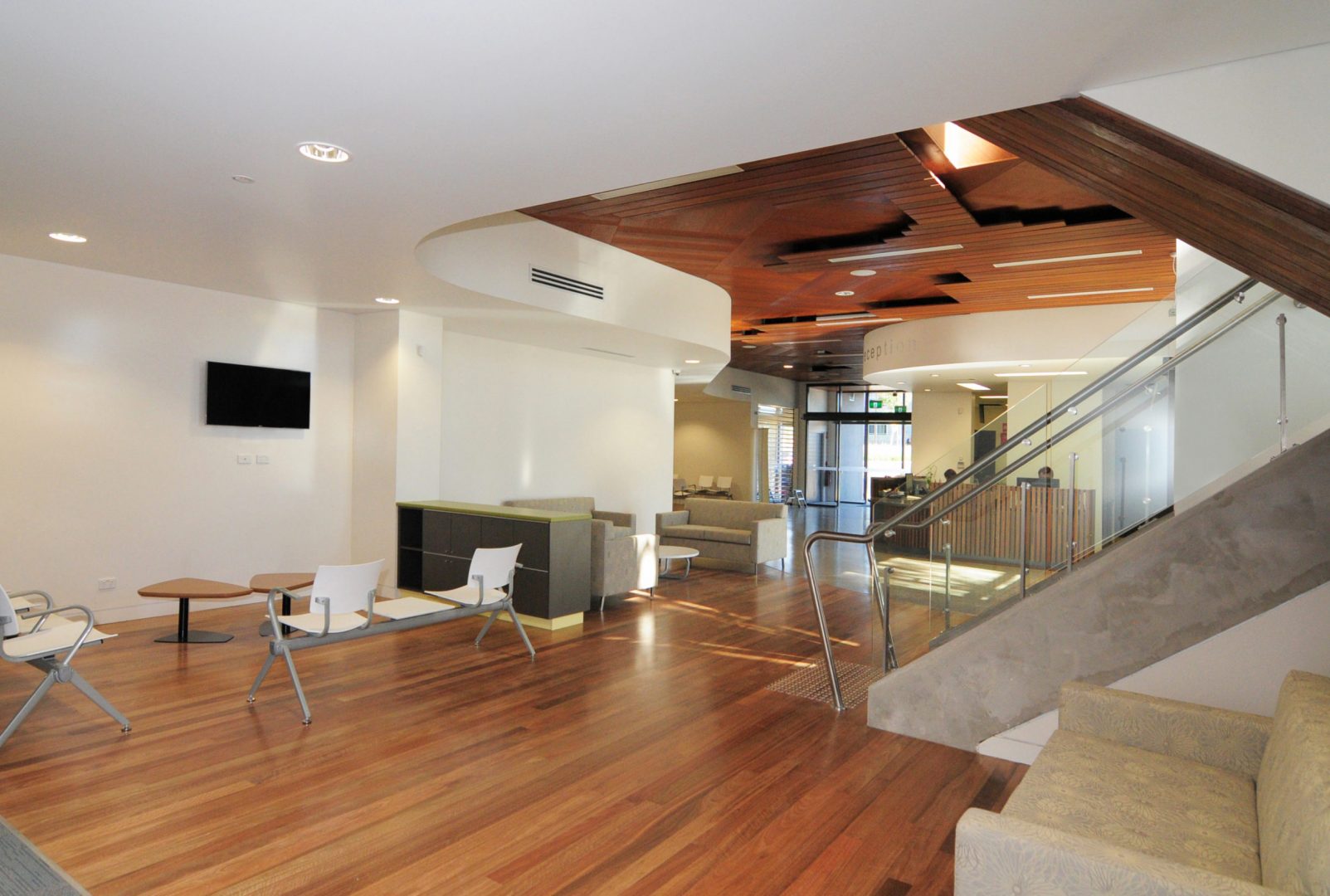The Psychology of Space
by Margie
Our built environment can be many things to us. Our interaction with it is an intensely personal thing and is shaped by our values, history, culture and beliefs. A room that feels cosy and comfortable to one person may feel dark and oppressive to another. As architects we have a responsibility to consider the psychological as well as the physical needs of the people using the spaces we create.
At times, constrained by the practicalities of planning controls and a desire to maximise usage of a space, there may be missed opportunities to delight, protect, inspire and provide comfort in our community.
Consider a waiting room in a hospital. On the surface this is a straightforward design exercise. The room should be a secure space, with adequate seating and easily observed by the nursing staff. Practically, this will look like a rectangular room with rows of chairs and a window to the reception desk. A standard design that is repeated throughout Australian hospitals and medical centres. This is far short of the full potential and does not recognise the psychological impact. As an architect, it is as disappointing as music without sound or dance without movement.
 A waiting room designed by Edmiston Jones for Grand Pacific Health Centre, Nowra.
Think of a child who has had a bad fall and broken their arm. In pain, shocked and waiting under the fluoro lights on a hard-plastic chair, watching other patients come in bloody, distressed or drunk. His mother beside him anxious and agitated. The waiting room clearly has another purpose. With a little innovation this cold room should be a warm and secure cocoon for a hurt and frightened child. Or a comfortable and tranquil space for a mother with a sick baby. It could be an earthy, grounding environment for someone with anxiety, or a private and secure space for someone that has been assaulted.
How do we achieve this? By asking the right questions. Architects have wide ranging skills and, when required, work with specialist consultants. Knowing that the most valuable information comes from the users themselves, our co-design workshops help to tap into and consolidate all the relevant data to clarify the brief. Sometimes, you simply don’t know what you don’t know!
A waiting room designed by Edmiston Jones for Grand Pacific Health Centre, Nowra.
Think of a child who has had a bad fall and broken their arm. In pain, shocked and waiting under the fluoro lights on a hard-plastic chair, watching other patients come in bloody, distressed or drunk. His mother beside him anxious and agitated. The waiting room clearly has another purpose. With a little innovation this cold room should be a warm and secure cocoon for a hurt and frightened child. Or a comfortable and tranquil space for a mother with a sick baby. It could be an earthy, grounding environment for someone with anxiety, or a private and secure space for someone that has been assaulted.
How do we achieve this? By asking the right questions. Architects have wide ranging skills and, when required, work with specialist consultants. Knowing that the most valuable information comes from the users themselves, our co-design workshops help to tap into and consolidate all the relevant data to clarify the brief. Sometimes, you simply don’t know what you don’t know!
 A waiting room designed by Edmiston Jones for Grand Pacific Health Centre, Nowra.
Think of a child who has had a bad fall and broken their arm. In pain, shocked and waiting under the fluoro lights on a hard-plastic chair, watching other patients come in bloody, distressed or drunk. His mother beside him anxious and agitated. The waiting room clearly has another purpose. With a little innovation this cold room should be a warm and secure cocoon for a hurt and frightened child. Or a comfortable and tranquil space for a mother with a sick baby. It could be an earthy, grounding environment for someone with anxiety, or a private and secure space for someone that has been assaulted.
How do we achieve this? By asking the right questions. Architects have wide ranging skills and, when required, work with specialist consultants. Knowing that the most valuable information comes from the users themselves, our co-design workshops help to tap into and consolidate all the relevant data to clarify the brief. Sometimes, you simply don’t know what you don’t know!
A waiting room designed by Edmiston Jones for Grand Pacific Health Centre, Nowra.
Think of a child who has had a bad fall and broken their arm. In pain, shocked and waiting under the fluoro lights on a hard-plastic chair, watching other patients come in bloody, distressed or drunk. His mother beside him anxious and agitated. The waiting room clearly has another purpose. With a little innovation this cold room should be a warm and secure cocoon for a hurt and frightened child. Or a comfortable and tranquil space for a mother with a sick baby. It could be an earthy, grounding environment for someone with anxiety, or a private and secure space for someone that has been assaulted.
How do we achieve this? By asking the right questions. Architects have wide ranging skills and, when required, work with specialist consultants. Knowing that the most valuable information comes from the users themselves, our co-design workshops help to tap into and consolidate all the relevant data to clarify the brief. Sometimes, you simply don’t know what you don’t know! 
Related News